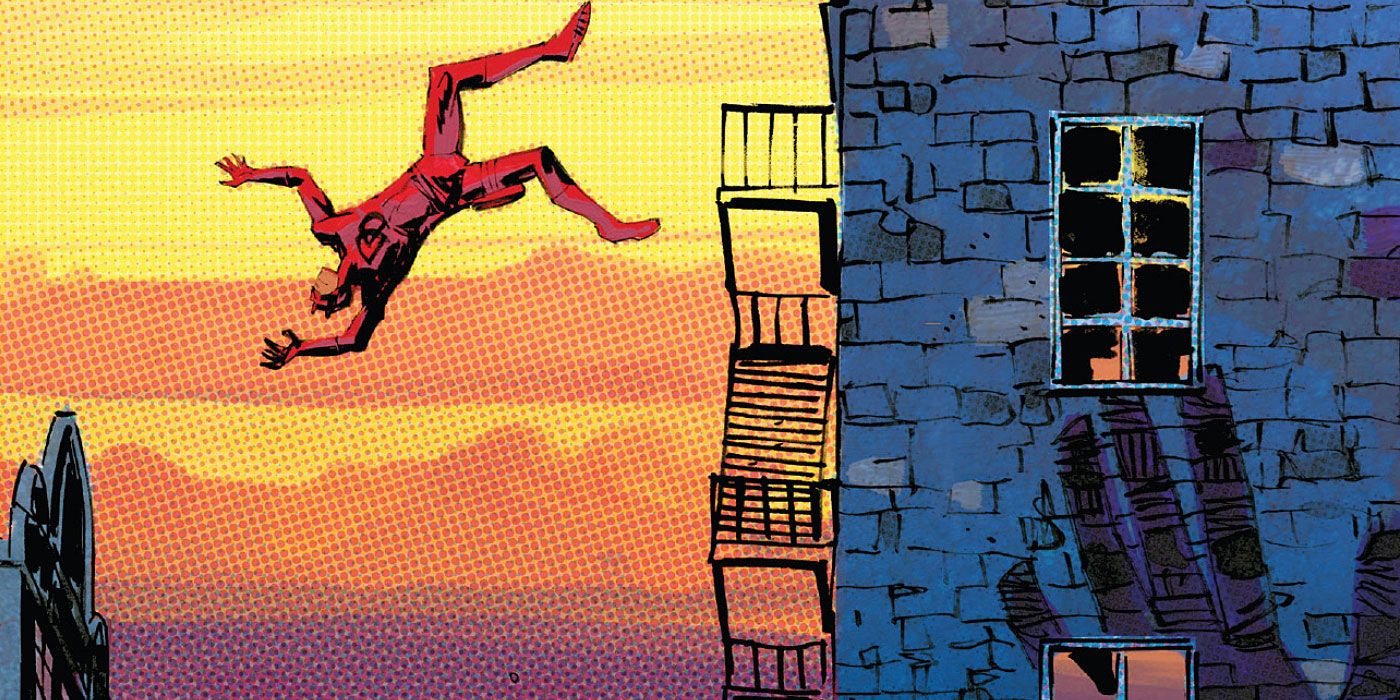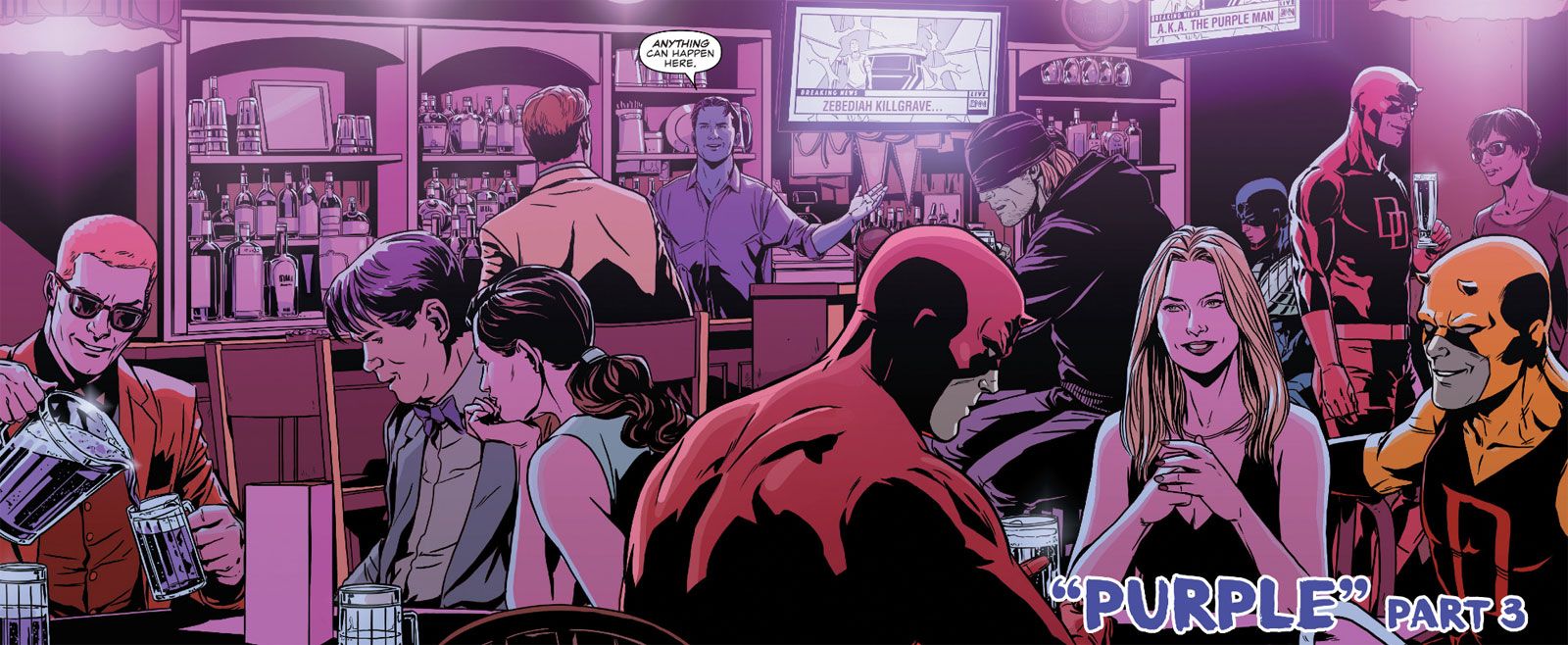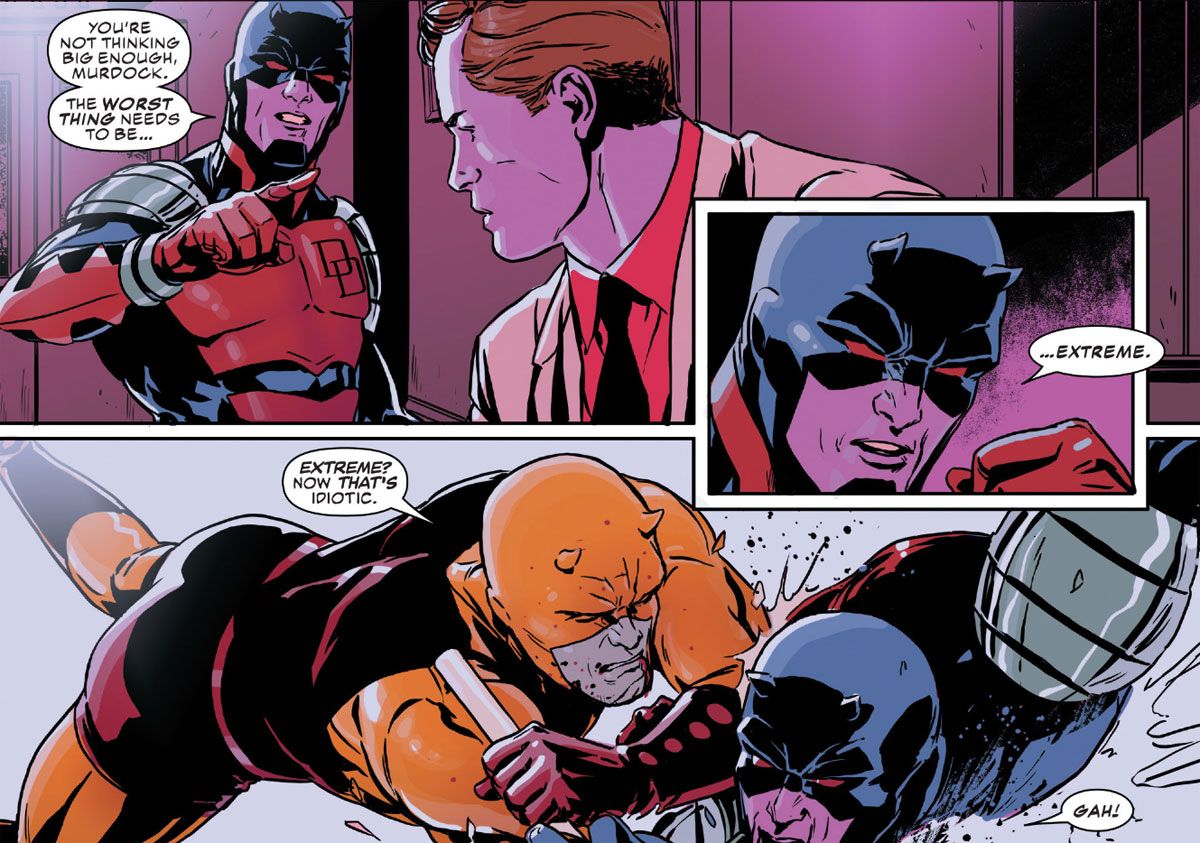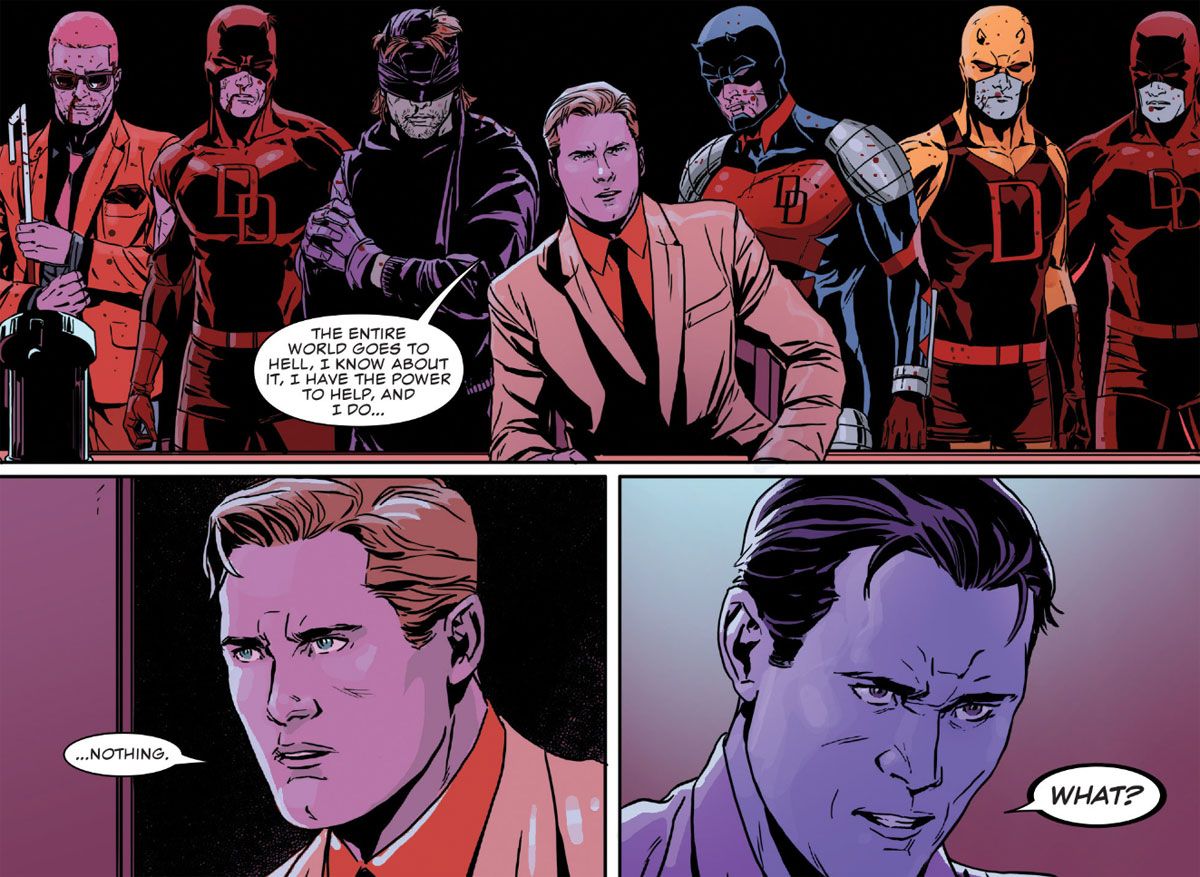SPOILER WARNING: The following article contains spoilers for “Daredevil” #19, by Charles Soule, Marc Laming, Miroslav Mrva and Matt Milla, on sale now.
The mystery of Matt Murdock’s post- “Secret Wars” time jump gets deeper (and darker) than ever in “Daredevil” #19, part three of the “Purple” story arc -- this time with a decidedly meta take on the matters at hand.
Seven Devils Walk Into A Bar
We last left Matt in a pretty precarious spot -- if you recall, he inadvertently delivered the final Purple Children right into the Purple Man’s hands, and then immediately succumbed to Zebediah’s influence despite his confidence that he could resist him. What follows is perhaps the single most self aware cross section of Daredevil continuity to ever play out in a comic book.
Zebediah’s power drags Matt into a sort of hallucination -- a “Cheers”-style bar (“Zebs,” in this instance) populated by not one, not two, but seven different iterations of Daredevil, from Matt’s civilian self to a representative of nearly every Daredevil era as made obvious by their varying costumes. There’s the vintage yellow, the basic black-and-blindfold made famous in Frank Miller and John Romita Jr’s “The Man Without Fear,” and later in the Netflix series. There’s the armored black of the early '90s, both the classic and modern solid reds (as denoted by the typeface of the double-D logos on each), and finally, the suit-and-tie set as created in Mark Waid and Chris Samnee’s recent run.
RELATED: Defenders: Charlie Cox Dons Daredevil Suit in New Set Photos
The bar, as it turns out, is Killgrave’s attempt to deep dive into Matt’s psyche. He explains that he’s grown tired of forcing his victims to do the things that he believes are terrible and instead has adopted a policy of making people do the things that they believe are horrible -- the “worst thing” imaginable for each specific victim, as chosen by themselves. Of course, this means that Killgrave has to first convince his victim to admit to him what their “worst thing” is first, which is a problem for Matt... but perhaps not for the reasons you might expect.
Too Many Murdocks
It’s not at all unusual for a superhero to undergo some pretty drastic evolution over the course of their existence. In fact, you’d be pretty hard pressed to find a classic hero still published today who bears more than a passing resemblance to their original incarnation. It’s the sort of growing pains readers expect to see when dealing with characters that are several decades (or more) old.
That sort of ever shifting evolution can pose a problem, however, when a character gets too many course corrections in too little time. Daredevil has experienced this phenomena in spades since his creation in 1964. Over the last 53 years, Matt’s been through some pretty extensive overhauls and reworks, and while most of them have historically avoided directly contradicting each other in ways that are too distracting, the “mood” of Daredevil stories is something that has never been all that consistent. Matt’s been a steadfast hero, a broken hearted ladies man, a struggling attorney, a stoic ninja, a demonically influenced anti-hero, the kingpin of crime, a happy-go-lucky public hero -- you get the picture.
It’s a lot of baggage for one hero (not to mention one creative team) to wrangle.
The multiple Daredevils peppering Zeb’s Bar is this baggage made manifest, Matt’s ongoing identity crisis rendered literally on the page, offering a way for the current creative team of Soule, Laming, Mrva and Milla to address this problem head on.
Each version of Daredevil populating the bar has a different answer for Killgrave’s question, flavored by their own specific points of origin. The “Man Without Fear” Matt aggressively explains in Miller-flavored growls that his “worst thing” is losing control and killing a loved one, while the suit-clad Waid-and-Samnee Daredevil cockily interjects that he’s just here to “have a good time,” echoing the sentiments of his own run.
The armored Daredevil of the '90s all but winks at the reader when he says that his counterparts aren’t thinking big enough -- they need to be more “extreme.”
The fact of the matter is made clear as Matt (Matt the Attorney, rather than Matt the costumed vigilante) explains to Killgrave: the “worst thing” a person can imagine is the thing that is their exact opposite, the inverse of everything they are -- and how can you know the opposite when you don’t know who you are in the first place?
Chaos Theory
In the end, the Daredevils are able to settle on an answer -- and a pretty simple one at that. The “worst thing” for Matt Murdock is chaos. Or, more specifically, chaos that Matt choses to do nothing about.
Zebediah is all too willing to make the first part of that equation happen with his power amplifying machine -- he wills the world into chaos (chaos that looks suspiciously like the recent “Civil War II” event, which Matt played little to no part in…) but is immediately frustrated by Matt’s lack of reaction. Apparently, doing “nothing” in the face of catastrophe isn’t the climatic event Killgrave was looking for. It is, however, effective for Matt. The process of coming to this conclusion, of digging deep into himself and figuring out what, really, is the worst thing that he can imagine has the effect of grounding him.
In the hallucinated bar, the seven Daredevils converge into one -- represented by the current, modern black costume that’s been used during this run -- and are able to finally overcome Killgrave’s trap and take him out. With the Purple Man out of commission, the Purple Children escape the machine and, when Matt asks them if they’ll be okay now that their father is no longer a threat, they turn his question back on him. They’ll be okay, sure -- but will Matt?
It's a great question, and one that Matt is all too good at dodging. Rather than give a definitive response, he explains he has to keep moving -- he has to help.
It looks like Zebediah’s mind games were more damaging than he was ready to let on, and the Purple Children are quick to take note. Just as Matt swings back into action, they confer amongst themselves -- deciding that they really ought to do something for Matt in return -- something that, most likely, involves the entire world forgetting that Matt Murdock is Daredevil.




